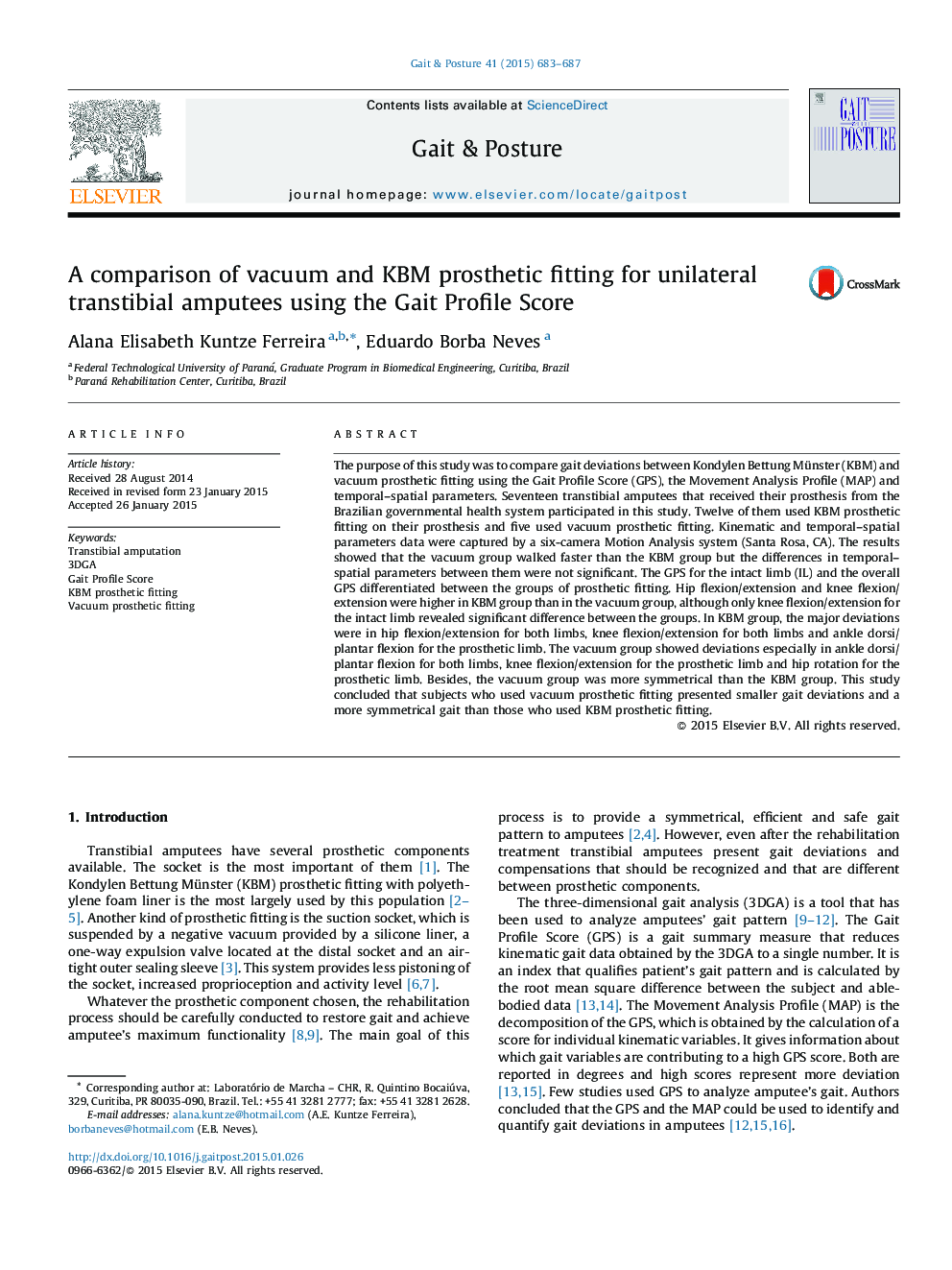| Article ID | Journal | Published Year | Pages | File Type |
|---|---|---|---|---|
| 6206193 | Gait & Posture | 2015 | 5 Pages |
â¢The vacuum group was more symmetrical and functional than the KBM group.â¢The vacuum group had less gait deviations than the KBM group.â¢GPS values were different between the groups.â¢MAP showed difference between the groups.
The purpose of this study was to compare gait deviations between Kondylen Bettung Münster (KBM) and vacuum prosthetic fitting using the Gait Profile Score (GPS), the Movement Analysis Profile (MAP) and temporal-spatial parameters. Seventeen transtibial amputees that received their prosthesis from the Brazilian governmental health system participated in this study. Twelve of them used KBM prosthetic fitting on their prosthesis and five used vacuum prosthetic fitting. Kinematic and temporal-spatial parameters data were captured by a six-camera Motion Analysis system (Santa Rosa, CA). The results showed that the vacuum group walked faster than the KBM group but the differences in temporal-spatial parameters between them were not significant. The GPS for the intact limb (IL) and the overall GPS differentiated between the groups of prosthetic fitting. Hip flexion/extension and knee flexion/extension were higher in KBM group than in the vacuum group, although only knee flexion/extension for the intact limb revealed significant difference between the groups. In KBM group, the major deviations were in hip flexion/extension for both limbs, knee flexion/extension for both limbs and ankle dorsi/plantar flexion for the prosthetic limb. The vacuum group showed deviations especially in ankle dorsi/plantar flexion for both limbs, knee flexion/extension for the prosthetic limb and hip rotation for the prosthetic limb. Besides, the vacuum group was more symmetrical than the KBM group. This study concluded that subjects who used vacuum prosthetic fitting presented smaller gait deviations and a more symmetrical gait than those who used KBM prosthetic fitting.
